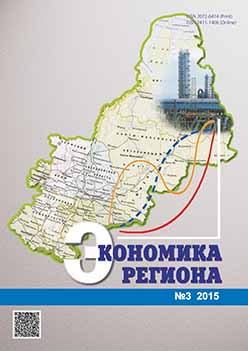Методический подход к учету истощения природных ресурсов, изменения состояния окружающей среды и человеческого капитала в валовом региональном продукте
Methodological Approaches for Estimating Gross Regional Product after Taking into Account Depletion of Natural Resources, Environmental Pollution and Human Capital Aspects
Author(s): Boris Alengordovich KorobitsynSubject(s): Economy, Geography, Regional studies
Published by: Институт экономики Уральского отделения Российской академии наук
Keywords: Ural Federal District; green gross regional product; genuine savings; adjusted net savings; depletion of natural resources;
Summary/Abstract: A key indicator of the System of National Accounts of Russia at a regional scale is Gross Regional Product characterizing the value of goods and services produced in all sectors of the economy in a country and intended for final consumption, capital formation and net exports (excluding imports). From a sustainability perspective, the most weakness of GRP is that it ignores depreciation of man-made assets, natural resource depletion, environmental pollution and degradation, and potential social costs such as poorer health due to exposure to occupational hazards. Several types of alternative approaches to measuring socio-economic progress are considering for six administrative units of the Ural Federal District for the period 2006–2014. Proposed alternatives to GRP as a measure of social progress are focused on natural resource depletion, environmental externalities and some human development aspects. The most promising is the use of corrected macroeconomic indicators similar to the “genuine savings” compiled by the World Bank. Genuine savings are defined in this paper as net savings (net gross savings minus consumption of fixed capital) minus the consumption of natural non-renewable resources and the monetary evaluations of damages resulting from air pollution, water pollution and waste disposal. Two main groups of non renewable resources are considered: energy resources (uranium ore, oil and natural gas) and mineral resources (iron ore, copper, and aluminum). In spite of various shortcomings, this indicator represents a considerable improvement over GRP information. For example, while GRP demonstrates steady growth between 2006 and 2014 for the main Russian oil- and gas-producing regions — Hanty-Mansi and Yamalo-Nenets Autonomous Okrugs, genuine savings for these regions decreased over all period. It means that their resource-based economy could not be considered as being on a sustainable path even in the framework of “weak” sustainability, i.e. sustainability under the assumption that the accumulation of producible physical capital and of human capital can compensate for losses in natural non reproducible resources.
Journal: Экономика региона
- Issue Year: 11/2015
- Issue No: 3
- Page Range: 77-88
- Page Count: 12
- Language: Russian

